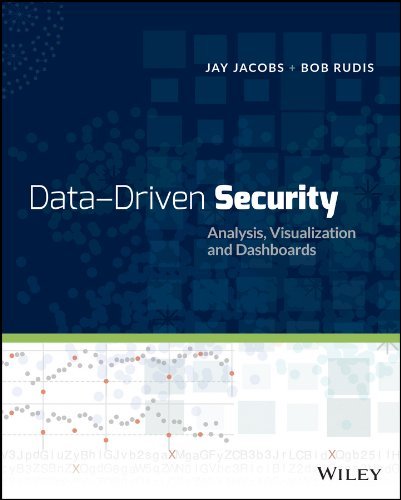Brim Security maintains a free, Electron-based desktop GUI for exploration of PCAPs and select cybersecurity logs:
along with a broad ecosystem of tools which can be used independently of the GUI.
The standalone or embedded zqd server, as well as the zq command line utility let analysts run ZQL (a domain-specific query language) queries on cybersecurity data sources.
The Brim team maintains a Python module that is capable of working with the zqd HTTP API and my nascent {brimr}gitea|gh|gl|bb R package provides a similar API structure to perform similar operations in R, along with a wrapper for the zq commmand line tool.
PCAPs! In! Spaaaaacce[s]!
Brim Desktop organizes input sources into something called “spaces”. We can check for available spaces with brim_spaces():
library(brimr)
library(tibble)
brim_spaces()
## id name
## 1 sp_1p6pwLgtsESYBTHU9PL9fcl2iBn 2021-02-17-Trickbot-gtag-rob13-infection-in-AD-environment.pcap
## data_path storage_kind
## 1 file:///Users/demo/Library/Application%20Support/Brim/data/spaces/sp_1p6pwLgtsESYBTHU9PL9fcl2iBn filestore
This single space availble is a sample capture of Trickbot
Let’s profile the network connections in this capture:
# ZQL query to fetch Zeek connection data
zql1 <- '_path=conn | count() by id.orig_h, id.resp_h, id.resp_p | sort id.orig_h, id.resp_h, id.resp_p'
space <- "2021-02-17-Trickbot-gtag-rob13-infection-in-AD-environment.pcap"
r1 <- brim_search(space, zql1)
r1
## ZQL query took 0.0000 seconds; 384 records matched; 1,082 records read; 238,052 bytes read
(r1 <- as_tibble(tidy_brim(r1)))
## # A tibble: 74 x 4
## orig_h resp_h resp_p count
## <chr> <chr> <chr> <int>
## 1 10.2.17.2 10.2.17.101 49787 1
## 2 10.2.17.101 3.222.126.94 80 1
## 3 10.2.17.101 10.2.17.1 445 1
## 4 10.2.17.101 10.2.17.2 53 97
## 5 10.2.17.101 10.2.17.2 88 27
## 6 10.2.17.101 10.2.17.2 123 5
## 7 10.2.17.101 10.2.17.2 135 8
## 8 10.2.17.101 10.2.17.2 137 2
## 9 10.2.17.101 10.2.17.2 138 2
## 10 10.2.17.101 10.2.17.2 389 37
## # … with 64 more rows
Brim auto-processed the PCAP into Zeek log format and _path=conn in query string indicates that’s where we’re going to perform further data operations (the queries are structured a bit like jq filters). We then ask Brim/zqd to summarize and sort source IP, destination IP, and port counts. {brimr} sends this query over to the server. The raw response is a custom data structure that we can turn into a tidy data frame via tidy_brim().
We can do something similar with the Suricata data that Brim also auto-processes for us:
# Z query to fetch Suricata alerts including the count of alerts per source:destination
zql2 <- "event_type=alert | count() by src_ip, dest_ip, dest_port, alert.severity, alert.signature | sort src_ip, dest_ip, dest_port, alert.severity, alert.signature"
r2 <- brim_search(space, zql2)
r2
## ZQL query took 0.0000 seconds; 47 records matched; 870 records read; 238,660 bytes read
(r2 <- (as_tibble(tidy_brim(r2))))
## # A tibble: 35 x 6
## src_ip dest_ip dest_port severity signature count
## <chr> <chr> <int> <int> <chr> <int>
## 1 10.2.17.2 10.2.17.1… 49674 3 SURICATA Applayer Detect protocol only one direction 1
## 2 10.2.17.2 10.2.17.1… 49680 3 SURICATA Applayer Detect protocol only one direction 1
## 3 10.2.17.2 10.2.17.1… 49687 3 SURICATA Applayer Detect protocol only one direction 1
## 4 10.2.17.2 10.2.17.1… 49704 3 SURICATA Applayer Detect protocol only one direction 1
## 5 10.2.17.2 10.2.17.1… 49709 3 SURICATA Applayer Detect protocol only one direction 1
## 6 10.2.17.2 10.2.17.1… 49721 3 SURICATA Applayer Detect protocol only one direction 1
## 7 10.2.17.2 10.2.17.1… 50126 3 SURICATA Applayer Detect protocol only one direction 1
## 8 10.2.17.1… 3.222.126… 80 2 ET POLICY curl User-Agent Outbound 1
## 9 10.2.17.1… 36.95.27.… 443 1 ET HUNTING Suspicious POST with Common Windows Process Names - Possib… 1
## 10 10.2.17.1… 36.95.27.… 443 1 ET MALWARE Win32/Trickbot Data Exfiltration 1
## # … with 25 more rows
Finally, for this toy example, we’ll also generate a visual overview of these connections:
library(igraph)
library(ggraph)
library(tidyverse)
gdf <- count(r1, orig_h, resp_h, wt=count)
count(gdf, node = resp_h, wt=n, name = "in_degree") %>%
full_join(
count(gdf, node = orig_h, name = "out_degree")
) %>%
mutate_at(
vars(in_degree, out_degree),
replace_na, 1
) %>%
arrange(in_degree) -> vdf
g <- graph_from_data_frame(gdf, vertices = vdf)
ggraph(g, layout = "linear") +
geom_node_point(
aes(size = in_degree), shape = 21
) +
geom_edge_arc(
width = 0.125,
arrow = arrow(
length = unit(5, "pt"),
type = "closed"
)
)
We can also process log files directly (i.e. without any server) with zq_cmd():
zq_cmd(
c(
'"* | cut ts,id.orig_h,id.orig_p"', # note the quotes
system.file("logs", "conn.log.gz", package = "brimr")
)
)
## id.orig_h id.orig_p ts
## 1: 10.164.94.120 39681 2018-03-24T17:15:21.255387Z
## 2: 10.47.25.80 50817 2018-03-24T17:15:21.411148Z
## 3: 10.47.25.80 50817 2018-03-24T17:15:21.926018Z
## 4: 10.47.25.80 50813 2018-03-24T17:15:22.690601Z
## 5: 10.47.25.80 50813 2018-03-24T17:15:23.205187Z
## ---
## 988: 10.174.251.215 33003 2018-03-24T17:15:21.429238Z
## 989: 10.174.251.215 33003 2018-03-24T17:15:21.429315Z
## 990: 10.174.251.215 33003 2018-03-24T17:15:21.429479Z
## 991: 10.164.94.120 38265 2018-03-24T17:15:21.427375Z
## 992: 10.174.251.215 33003 2018-03-24T17:15:21.433306Z
FIN
This package is less than 24 hrs old (as of the original blog post date) and there are still a few bits missing, which means y’all have the ability to guide the direction it heads in. So kick the tyres and interact where you’re most comfortable.




Pingback: Brimming With Possibilities: Query zqd & Mine Logs with zq from R | R-bloggers
Pingback: Zeek: Zeek Monthly Newsletter – Issue 9 – April 2021